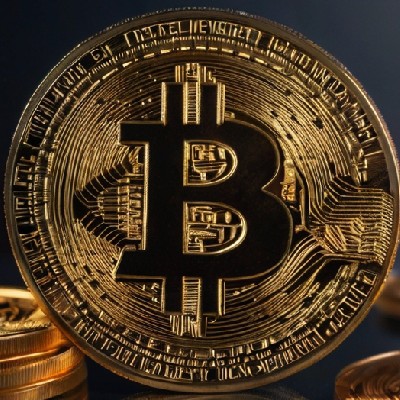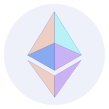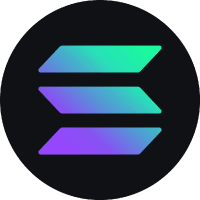

Virtuals Protocolの価格VIRTUAL
VIRTUALからJPYへの交換
本日のVirtuals Protocolの現在価格(JPY)
Virtuals Protocolの価格は今日上がると思いますか、下がると思いますか?
Virtuals Protocol (VIRTUAL)について
Virtuals Protocolとは?
Virtuals Protocolは、2024年に発表されたAIとメタバースプロトコルです。超パーソナライズされた没入型体験を創造することで、バーチャルインタラクションに革命を起こすことを目的としています。Virtuals Protocolは、ゲーム、メタバース、オンライン交流などの様々なデジタル環境に高度なAIエージェントを統合することに焦点を当てています。このプロトコルは、創造性、多様性、信頼を育むために分散化を活用し、バーチャルな交流が革新的であるだけでなく、参加者全員にとって公平であることを保証します。
バーチャル空間への移行は不可避であり、Virtuals Protocolはバーチャルな交流をより魅力的でリアルなものにすることで、この変革をリードすることを目指しています。生成的AIとマルチモーダル出力(テキスト、サウンド、ビジュアル)を活用することで、Virtuals Protocolはパーソナライゼーションと没入感を高め、すべてのバーチャル体験をユニークなものにします。このアプローチはユーザー体験を豊かにするだけでなく、エコシステム内の開発者、クリエイター、ユーザーに新たな経済的機会を創出します。
関連資料
公式ドキュメント: https://whitepaper.virtuals.io/
公式ウェブサイト: https:// www.virtuals.io/
Virtuals Protocolの仕組み
Virtuals Protocolは、VIRTUALと呼ばれるAIエージェントの作成と使用を奨励する分散型エコシステムを通じて運営されています。これらのエージェントは、コグニティブコア、ボイス&サウンドコア、ビジュアルコアなど、さまざまな特化型コアを統合しているため、複雑なマルチモーダル・インタラクションを行うことができます。この構造により、VIRTUALは知的財産のキャラクターのように振る舞ったり、特定のタスクを実行したり、あるいは個人のデジタル版として行動したりすることができ、バーチャル空間における娯楽性と実用性の両方を高めることができます。
エコシステムは、プロトコルレイヤーとDAppレイヤーの2つの主要レイヤーで構築されています。プロトコルレイヤーはモデルのハブとして機能し、開発者がアクセスして構築できる基礎的なAIモデルとアルゴリズムを提供します。コントリビューターはデータを提供しモデルを開発し、バリデーターはこれらのインプットの品質と信憑性を保証します。一方、DAppレイヤーは、これらのAIモデルの実用化に重点を置き、分散型アプリケーション(DApps)がVIRTUALをシームレスに統合できるようにします。この統合は、開発者に優しいソフトウェア開発キット(SDK)によって促進され、さまざまなDApp環境に高度なAI機能を組み込むプロセスを簡素化します。
経済的インセンティブは、Virtuals Protocolのエコシステムを維持する上で重要な役割を果たしています。コントリビューターとバリデーターはその努力に対してVIRTUALトークンで報酬を受け、高品質なデータとモデルの継続的な流入を保証します。プロトコルはまた、DAppsから発生した収益がVIRTUALトークンの買い戻しに使われる買い戻しスキームを採用しており、トークンの価値と安定性を維持しています。この自立サイクルは「Virtual-ous Flywheel」として知られ、エコシステムが活気と生産性を維持することを保証しています。
VIRTUALトークンとは?
VIRTUALは、Virtuals Protocolエコシステムのユーティリティおよびガバナンストークンです。VIRTUALは、貢献へのインセンティブ付与、開発の意思決定支援、プロトコルの財務管理など、複数の機能を果たします。トークンの保有者はVIRTUALトークンをステーキングして、どのAIエージェントが開発支援を受けるかに影響を与えることができ、リソースの割り当てがコミュニティの利益に沿うようにします。
VIRTUALトークンは買い戻しスキームも促進し、DAppsから発生する収益の一部がオープンマーケットからのトークン買い戻しに使われます。この仕組みはトークンの価値を維持し、プロトコルの長期的な持続可能性をサポートします。さらに、VIRTUALトークン保有者は、エコシステム内の新しいトークン提供に関連するエアドロップの恩恵を受け、長期的な関与と参加をさらに促進します。VIRTUALの総供給量は10億トークンです。
Virtuals Protocolの価格決定要因
Virtuals Protocol(VIRTUAL)の価格は、需給ダイナミクス、市場センチメント、ブロックチェーンとWeb3分野の最新ニュースの組み合わせによって影響を受けます。分散型アプリケーション(DApps)におけるVirtuals Protocolの採用の増加、暗号資産(仮想通貨)のポジティブなトレンド、戦略的パートナーシップなどの要因が需要を促進し、トークンの価値を押し上げる可能性があります。一方、市場のボラティリティ、仮想通貨規制の変更、暗号資産市場(仮想通貨市場)の全体的なセンチメントは価格に影響を与える可能性があります。VIRTUAL仮想通貨のチャートに注目し、定期的に仮想通貨分析を行うことで、潜在的な価格変動に関する洞察を得ることができます。
これらの要因に加えて、仮想通貨価格予測モデルと専門家の分析は、投資家がVIRTUALトークンの将来のパフォーマンスを測定するのに役立ちます。トークンの価格は、買い戻しスキームやトークン分配戦略など、プロトコルのトークノミクスにも影響されます。エコシステムが成長し、VIRTUALを利用するDAppsが増えるにつれ、トークンの価値は上昇し、2024年以降に最高の仮想通貨投資となる可能性があります。しかし、投資家は仮想通貨リスクと市場のボラティリティに留意し、Virtuals Protocolエコシステム内の最新動向とトレンドを常に把握しておく必要があります。
Virtuals Protocolの投資や取引に興味があり、VIRTUALの購入をお考えの方には、安全かつユーザーフレンドリーなプラットフォームを提供するBitgetなどの主要取引所がおすすめです。
Virtuals ProtocolのAI分析レポート
Virtuals Protocolの価格履歴(JPY)
 最低価格
最低価格 最高価格
最高価格 
Virtuals Protocolの最高価格はいくらですか?
Virtuals Protocolの最安価格はいくらですか?
Virtuals Protocolの価格予測
2026年のVIRTUALの価格はどうなる?
2031年のVIRTUALの価格はどうなる?
注目のキャンペーン
よくあるご質問
バーチャルプロトコルの現在の価格は何ですか?
バーチャルズプロトコルの価格に影響を与える要因は何ですか?
バーチャルプロトコルは価格が上昇すると予想されていますか?
どこでバーチャルズプロトコルを購入できますか?
バーチャルプロトコルの価格履歴は何ですか?
バーチャルズプロトコルの価格は市場の変動によってどのように影響されますか?
バーチャルプロトコルの時価総額は何ですか?
バーチャルプロトコルの価格に影響を与える可能性のある最近のニュースはありますか?
バーチャルプロトコルの価格アラートを設定するにはどうすればよいですか?
バーチャルズプロトコルの来月の期待される価格範囲は何ですか?
Virtuals Protocolの現在の価格はいくらですか?
Virtuals Protocolの24時間取引量は?
Virtuals Protocolの過去最高値はいくらですか?
BitgetでVirtuals Protocolを購入できますか?
Virtuals Protocolに投資して安定した収入を得ることはできますか?
Virtuals Protocolを最も安く購入できるのはどこですか?
Virtuals Protocolに関するニュース
Virtuals Protocolの最新情報
Virtuals Protocol市場
Virtuals Protocol保有量
Virtuals Protocolの保有量分布表
Virtuals Protocolの集中度別保有量
Virtuals Protocolの保有時間別アドレス

Virtuals Protocolのグローバル価格
- 1
- 2
- 3
- 4
- 5
今日の暗号資産価格
Bitgetに新規上場された通貨の価格
Virtuals Protocol(VIRTUAL)の購入方法

無料でBitgetアカウントを作成します

アカウントを認証する

VIRTUALをJPYに交換
もっと購入する
Virtuals Protocol(VIRTUAL)はどこで買えますか?
動画セクション - 素早く認証を終えて、素早く取引へ

VIRTUALからJPYへの交換
Virtuals Protocolの評価
Bitgetインサイト




Virtuals Protocolの追加情報
取引
Bitget Earn
VIRTUAL/USDT
現物VIRTUAL/USDT
マージンVIRTUAL/USDT
USDT-M







